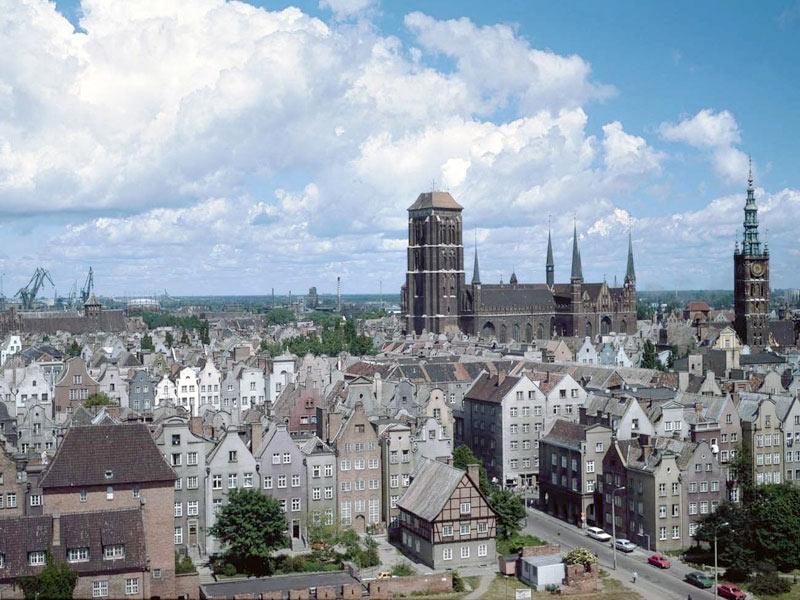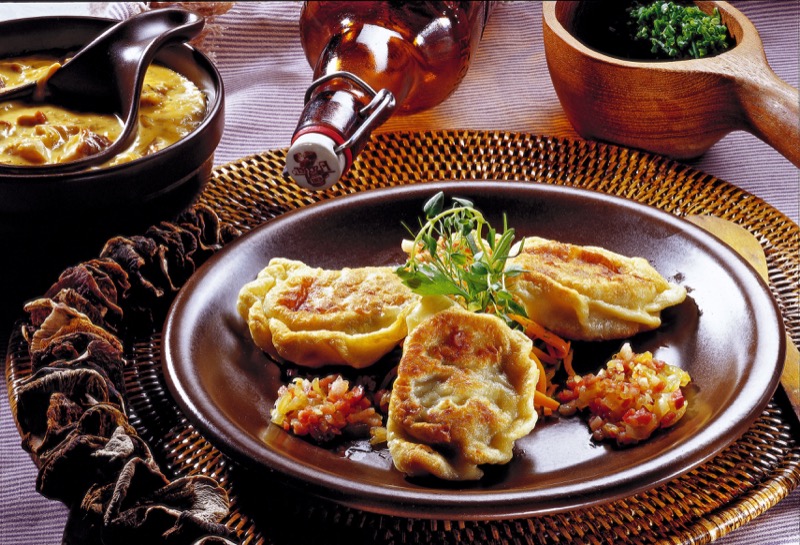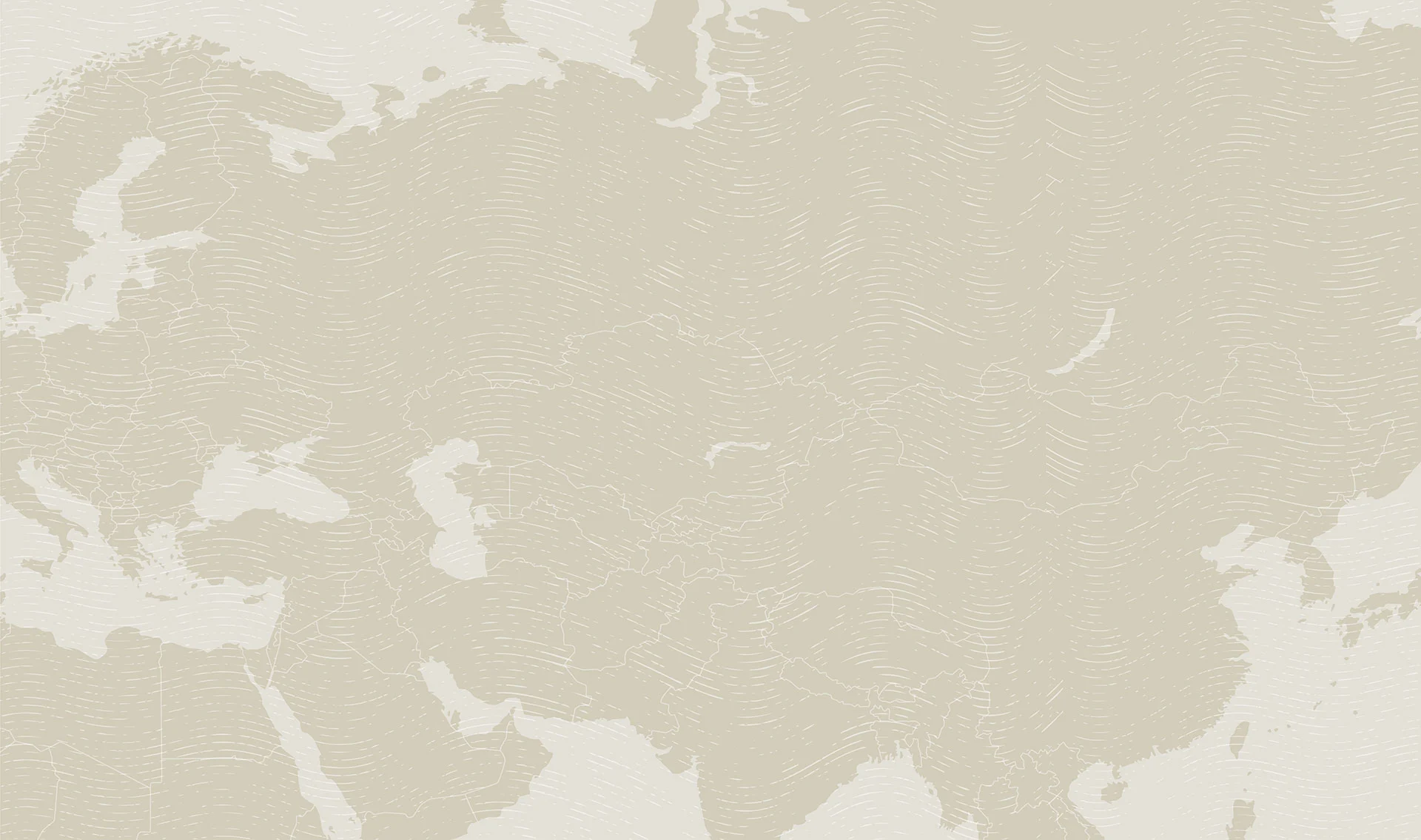Super Poland: 7 Reasons to Visit Poland Now
For years Poland has been one of the top 20 most visited countries in the world, according to the UN World Tourism Organization. Few countries lay claim to such a wealth of architectural treasure and natural beauty as Poland. Lonely Planet designated it #7 in the Top Ten Countries to Visit in 2016, writing, “If any country in Europe can boast superpowers, it’s Poland.”

Here are seven of its super charms:
1. Wroclaw, Capital of Culture
The 4th-largest city in Poland, Wroclaw is a 2016 European Capital of Culture. The European Capital of Culture program was launched in 1985 to help introduce and bring together the different cultures of Europe. Each year one or more of Europe’s most wonderful cities is given the title and invites the world to join a year-long cultural celebration that can include music, dance, art, drama, exhibitions and festivals – anything that shows off the history and traditions of the place.

Originally a Slavic settlement already established by the year 1000, Wroclaw was for hundreds of years called Breslau, and ruled by Germans. By the end of WWII, over 40,000 citizens were killed, and the city was awarded to Poland. The remaining German inhabitants were expelled or repressed and Poles from Lwow, which became the Ukrainian city of Lviv, were encouraged to settle here.

Today Wroclaw retains the beauty of its Old Town, a combination of Germanic Gothic, Viennese baroque and Flemish Renaissance structures. Another highlight is incredible Leopoldine Hall, a gorgeous baroque confection of hanging plaster sculptures, frescoes of coral and turquoise and dark wooden pews. Every inch of the arched hall is decorated with exuberant artwork.

Wroclaw’s UNESCO-listed modernist Centennial Hall, designed by noted German architect Max Berg, was constructed between 1911 and 1913, and is the first building of its size to be made of reinforced concrete. The oldest restaurant in Europe is located here, as well. It’s called “Piwnica Swidnicka,” and it started life as a beer hall in 1275.

2. Warsaw, Modern Capital
A walking tour of UNESCO-listed Old Warsaw, meticulously reconstructed after its destruction during WWII, is a great way to admire the highlights of the city. Explore the gracious Royal Road, leading from the historic buildings, churches, and palaces of the Old Town to the gardens, chic shops, and cafés along Krakowskie Przedmiescie and Nowy Swiat streets. Many of Warsaw’s landmarks line the pedestrian way, including the Presidential Palace, Holy Cross Church where Chopin’s heart is kept, the Bristol Hotel, Warsaw University, and the Copernicus statue. The road leads to Wilanow Castle south of the city center.

Take a stroll in Lazienki Park along the banks of the Vistula River, where outdoor Chopin concerts are held during the summer months. Discover the former Warsaw Ghetto, where an estimated 450,000 Jews – almost 30% of Warsaw’s population – were crowded into 2.5% of the city’s area, and the Umschlagplatz where the Gestapo had the Jews assemble to be sent to Treblinka.
(click image to view larger photo)
In June 1989, Poland held its first partially free elections since the end of WWII, and the result was that communism lost its grip on the country. 61 years after the Warsaw Pact – the Cold War defense treaty among the USSR and seven satellite states – was signed in Warsaw, the city hosted the 2016 NATO Summit.
We also recommend a visit to Warsaw’s award-winning POLIN Museum. In April 2016, POLIN: Museum of the History of Polish Jews won the European Museum of the Year Award. The European Museum Forum chose the three-year-old museum out of 49 stellar candidates from 24 countries. In 2017 it was awarded a Europa Nostra Award, the top honor recognizing European cultural heritage, chosen from among 202 contenders.

The cornerstone of the museum was laid in 2007 in Warsaw’s former Jewish Ghetto, over the spot where the Ghetto Uprising began in January, 1943. The imposing building of glass and limestone commemorates the 1,000-year history of the vibrant Jewish community in Poland, not only the tragic war years.
“[This] is not a museum of the holocaust, it is a museum of life,” said Israel’s President Reuven Rivlin at the museum’s opening in 2013. “It is the place which commemorates everything that is gone and will never return – and it reveals hope for a different future. And although Jews were torn away from Poland, it is difficult, or even impossible, to tear Poland away from Jews.”
3. Krakow, 3 in 1
Poland’s second city, Krakow is a three-in-one UNESCO tour de force. Its historic center was included on UNESCO’s first World Heritage list in 1978. Outside of town a second World Heritage Site resides under the ground: the Wieliczka Salt Mine. And then there’s the Auschwitz Birkenau Nazi Concentration Camp, a manifestation of the inhumanity that humans are capable of.

Rynek Glowny
Since the Tatar raids in the 13th century, the Old Town has remained mostly intact — the only large Polish city to escape the destruction of WWII. In its center is the largest remaining medieval town square in Europe, Rynek Glowny, the Main Market Square, laid out in 1257. Its historic center includes the medieval market square with its Renaissance Cloth Hall and historic churches, and immense royal Wawel Castle on the hill above.

Wieliczka Salt Mine
Miners have worked the Wieliczka Salt Mine for 700 years. In the 19th and early 20th centuries miner/sculptors carved out beautiful chambers and chapels on the first three levels. A highlight of the trip down the mines is the fabulous Chapel of the Blessed Kinga, where everything, including statuary and chandeliers, is carved from salt. A UNESCO World Heritage Site, the mine displays 700 years of evolving technology and artistry.
(click image to view larger photo)
Auschwitz-Birkenau
30 miles west of Krakow is the Polish town of Oswiecim, whose German name, Auschwitz, has become a symbol of horror and genocide. In 1940, the German Nazi occupiers took over this former army barracks and populated it with Polish political prisoners. As the war years went on, the Nazis expanded and refined the camp, imprisoning Jews from all over Europe here before sending them on to their deaths at nearby Birkenau. A new exhibition, created in 2013 by Israel’s Yad Vashem in the camp’s former Block 27, brings the experience closer to home with drawings by imprisoned children, and an enormous Book of Names listing the 4.2 million victims of the Holocaust. The entire complex is a reminder of the human impact of intolerance and hatred.
(click image to view larger photo)
4. Gdansk, Harbinger of History
Gdansk, Poland’s maritime city on the Baltic Sea, was first mentioned in historical documents in 997. In its 1,000 years of existence, this venerable port city has been the prize in a long game of tug-of-war between Germany (who called it Danzig) and Poland, changing hands six times. To westerners, the name Gdansk is inseparable from the trade union Solidarity and its leader, Lech Walesa, who later became the country’s first president. Solidarity’s strikes at the Gdansk shipyard in 1980 were, in retrospect, the beginning of the end for communism.

Today Gdansk is a vital riverside city whose historic sections are filled with Renaissance architecture and whose shipbuilding and shipping industries are healthy and growing.

Some 40 miles away, the huge and beautiful medieval fortress of Malbork was built in the 13th century by the Order of Teutonic Knights. A UNESCO World Heritage Site, the castle complex is one of the largest in the world. The old fortress was painstakingly restored during the late 19th and early 20th centuries, and again after WWII.

5. The Tatras, High and Mighty
The High Tatras are situated in southern Poland and the northern corner of Slovakia. The cross-border Tatra National Park features the only alpine mountains in the whole Carpathian Mountain range. The expansive national park is protected by environmental law, and retains membership in the World Network of Biosphere Reserves of UNESCO.

6. Bialowieza Forest, Where the Wisent Roams
This vast UNESCO-listed forest situated on the Polish border near Belarus is home to thousands of animal and plant species, many of which are endangered. The wisent (European Bison) was reintroduced after being hunted to extinction in the area. Now the park is home to one of the last herds of these rare creatures, along with bear, deer, and lynx.

7. Pierogi, Super Food
Traditional Polish-style pierogi is Poland’s national dish, and has been since the 17th century. Chefs and home cooks mix and roll the thin unleavened dough, then stuff it with any number of savory ingredients. Pierogi can be stuffed with mashed potatoes and onions, ground meat, cheese, or even fruit. They are usually topped with a choice of sour cream, onions, or bacon bits.


Travel with MIR to Poland
Little over two decades after regaining its independence, Poland has become one of the powerhouses of Europe. Visit the gracious capital of Warsaw and lovely Krakow, stroll the beaches of the Mazury Lake District, hike the trails of the spectacular Tatra Mountains, and talk to the local people and you will agree with us.
MIR has over two decades of travel experience to Poland, with on-the-ground support and tour managers that clients rave about. MIR’s full service, dedication, commitment to quality, and destination expertise have twice earned us a place on National Geographic Adventure’s list of “Best Adventure Travel Companies on Earth.”
MIR’s wintery small group tour to Poland, Christmas Traditions of Poland, is perfect for travelers of any age. Celebrate the heartfelt holiday traditions of Poland by wandering Krakow’s brilliant Christmas Market and joining a Polish family in their Warsaw home for the intimate Christmas Eve feast called Wigilia, where you can sample 12 different traditional dishes.
Or, opt to travel to Poland any time of the year on our Essential Poland independent journey or on a custom private journey.
MIR specializes in personalized private journeys, and we love to take your ideas and weave them into a trip tailored especially for you. Travel wherever, however, and with whomever you like, relying on our expert assistance. Contact us to find out more about our custom and private travel expertise – each trip handcrafted to your interests, dates, and pace.


















